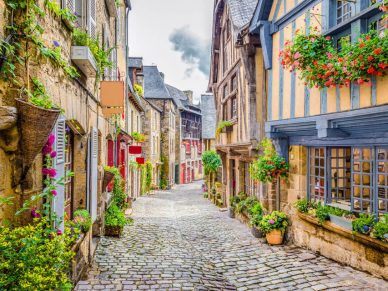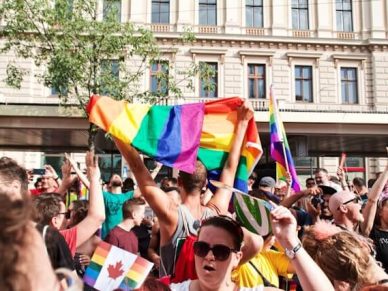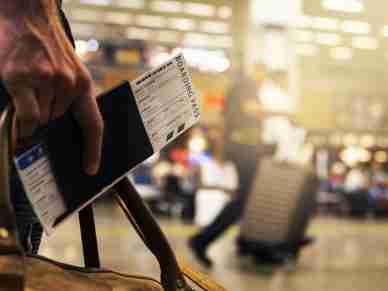Car-free zones are changing daily life, health, and attitudes in crowded cities
In the opening scene of Mike Judge’s 1999 sendup of corporate culture, “Office Space,” the protagonist sits in traffic on his commute to work. He moves a few feet, then has to slam on the brakes. He tries to change to a faster-moving lane only for that lane to grind to a halt once he finally gets over just as the lane he left starts to move. He notices with much chagrin that an old man with a walker who passed him earlier is now way ahead of him. All he can do is sigh in frustration and resignation.
A quarter of a century later, that’s still the reality for a lot of drivers. In pre-pandemic figures, the Texas Transportation Institute’s 2019 Urban Mobility Report found that Los Angeles commuters spent 119 hours – nearly five full days – a year stuck in traffic. San Francisco and Washington, D.C., figures also topped 100 hours, with New York at 92. While the pandemic eased traffic considerably, the pause didn’t last long, the 2021 report stated.
“The underlying elements of traffic problems – too many car trips, too much rush-hour roadwork, crashes, stalled vehicles, and weather issues – have not receded,” Tim Lomax, one of the report’s authors, said.
To combat pollution, reduce traffic injuries and fatalities, and create more public space, cities have been experimenting with car-free zones, places where cars aren’t allowed at certain times or altogether. In a lot of cases, they’ve found that it boosts tourism and patronage of local businesses and generally just makes things more pleasant.
Initiatives Abroad

Copenhagen’s Strøget shopping area is a pioneer in car-free zones and provides a blueprint for others to emulate. Starting in the 1950s, city officials closed the area to cars during the busy Christmas holidays. The move to a pedestrian zone became permanent in 1962, and businesses in the four-block area reported a 40% jump in business.
In 2021, then-Minister of Transport Benny Engelbrecht proposed car-free Sundays across Denmark. “We want to give the cities an opportunity to be able to give a different Sunday life and utilize the urban space in new ways,” he said. “We can see that there have been initiatives in Copenhagen with side streets and other things. We give the opportunity to make a hybrid, where cars drive every day, and on Sundays you use the street in a different way.”
Architecture and urban planning firm JAJA has proposed a Copenhagen Car Free(dom) plan that prioritizes green spaces, public transportation, and bikes and scooters in the city center.
The oil crisis of the 1970s prompted the Dutch government to ban driving on Sundays for a three-month period in 1973-74. Bike rental service Swapfiets wrote to the city councils of Amsterdam, Rotterdam, and the Hague to ban driving one Sunday a month. While that has not happened, Amsterdam is removing 11,200 parking spaces and redesigning roads for wider sidewalks, more bike lanes, and trees. By 2030, gas-powered vehicles will be banned in the Dutch capital.

London’s low-traffic neighborhoods stem from a more pressing problem. In 2016, more than 2 million residents lived in areas with levels of air pollution that were so high as to be illegal. The city adopted an all-hands-on-deck approach that includes taxes for driving in the city center and for higher-emission vehicles and redesigned roads in residential areas to reduce traffic. As a result, the number of Londoners living in an area with illegal levels of air pollution fell by 94% in four years.
Reducing traffic pollution and congestion in Paris has long been a goal of Mayor Anne Hidalgo, who has been in office since 2014. Her biggest initiative yet is set to go into effect this year before the city hosts the Summer Olympics. In the first four arrondissements in the city center, through traffic that does not stop in the area will be banned. Cars of residents and short-term hotel guests, delivery vehicles, and cars of people with business in the area will be allowed. The city plans to enforce the quiet zone with spot checks of vehicles exiting the area and estimates a 55% reduction in traffic in the city center. Hidalgo has also proposed removing more than half the parking spots in Paris and plans to transform the Champs-Elysées into an “extraordinary garden” with 50,000 square feet of greenery added to the boulevard by 2030.
U.S. Car-Free Zones

That’s all well and good for Europe, but what about in the U.S., where in many cases cities grew up and spread out along highways? Well, there’s plenty of room to make accommodations for car-free zones, and some major cities are giving it a shot. Virtually any new development comes with the question of where people will park. It’s that attitude that has created approximately 2 billion parking spaces in the U.S. even though there are only about 300 million cars on the road.
The argument often goes that businesses need their customers to be able to park nearby, and if that’s not an option, they’ll go somewhere else. But in practice, that’s not the case. A street with a lot of parking naturally has a lot of cars on it, which makes it noisier, more hectic, and more dangerous; it’s not exactly a formula for a pleasant shopping day. When Philadelphia removed 7% of its downtown parking between 2010-15, retail sales in the area went up. New bike lanes in New York corresponded with a 24% increase in retail sales nearby. Several studies have found that bicyclists and pedestrians spend more than drivers in city centers.
New York’s Summer Streets program has expanded to 20 miles of car-free zones across all five boroughs on select Saturdays in July and August from 7 a.m.-1 p.m.
“Something special happens when we open our streets to New Yorkers,” Mayor Eric Adams said. “This is a bold new vision for public space in New York City — a bold new way of empowering residents, supporting local businesses, and creating open spaces. Every single New Yorker deserves access to safe, free, open space.”
Inspired by Barcelona’s Superblock program, Los Angeles is moving forward with a Park Block pilot program that will ban cut-through traffic in certain areas, allowing up to 70% of street surface and intersections to become usable public space. An L.A. city council report said that Barcelona’s program cuts air and noise pollution in superblock areas without a significant increase in traffic congestion nearby. Residents in superblock areas have reported a better sense of tranquility and quality of sleep, in addition to the environmental benefits.
“(Park Blocks) can create instant public open space with substantial shade, outdoor recreation, greening and storm water capture in communities desperate for parks,” the report says. “And they can be accomplished using participatory and customized public processes.”
San Francisco’s Sunday Streets program creates temporary car-free zones of 1-4 miles with local businesses and nonprofits providing free activities. Part of Market Street from City Hall to the Embarcadero has been closed to cars since January 2020, and advocates are pushing to make the Embarcadero the city’s next car-free zone.
Car culture being what it is in the U.S., people can be hesitant to the idea of car-free zones.
“If you propose this idea to the average American, the response is: if you take my car away from me, I will die,” J. H. Crawford, author of Carfree Cities, told Wired UK. “If you do that overnight, without making any other provisions, that’s actually approximately correct.”
When they’re created with a well-thought-out idea and execution, though, people find they love it.
“Generally speaking, if a sensible program is adopted to really reduce or eliminate car usage in a central urban area, it seems to stick,” Crawford said. “If you go back a year or two later, people will just say: Well, this is the best thing we ever did.”
It sure beats sitting in traffic as an old man on a walker blows past you.
















Leave a Reply